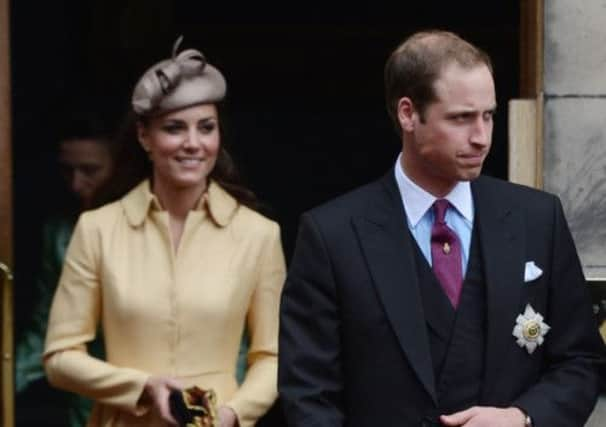Prince William descended from a Scot and Indian maid


Scientists testing saliva samples from the Duke of Cambridge’s relatives discovered the link between the future king and a woman who was part-Indian.
The connection traces back just eight generations, with the woman, Eliza Kewark, being the duke’s great, great, great, great, great grandmother.
Advertisement
Hide AdAdvertisement
Hide AdShe was housekeeper to his fifth great-grandfather Theodore Forbes, born in 1788, a Scottish merchant who worked for the East India Company in Surat, a port north of Bombay.
The research was carried out by BritainsDNA, a genetic ancestry testing company, which found that the Duke’s genetic connection to the populous Commonwealth nation runs through the maternal line.
The firm used a mixture of traditional genealogy and cutting-edge science to come up with the findings.
The research shows that the second in line to the throne carries Ms Kewark’s mitochondrial DNA (mtDNA). Mitochondrial DNA is a small piece of DNA inherited mostly unchanged from a mother to her children.
In this instance, the mtDNA was passed on by Eliza’s daughters and granddaughters directly in an unbroken line to Princess Diana, then on to Prince William and Prince Harry, researchers found.
Scientists said it is “very likely” that Prince William’s heirs will also carry a small proportion of Indian DNA from Ms Kewark, whose father may have been of Armenian descent.
Dr Jim Wilson, a genetics expert at the University of Edinburgh and chief scientist at BritainsDNA, who carried out the research, said: “This is a great example of how genetics can be used to answer specific historical questions and uncover fascinating facts about ancestry.”
Ms Kewark, who was born in about 1790 and lived in India when it was governed by the East India Company, is thought to have had Armenian blood because of her surname and the presence of Armenian script in letters from her to Mr Forbes.
Advertisement
Hide AdAdvertisement
Hide AdDr Wilson said: “I’ve been intrigued by genealogy all my life and I am a geneticist. I became aware of Eliza a couple of years ago. She was reported to be Armenian but she was living in Bombay, apparently. This intrigued me.
“I was wondering if it was possible she was Indian. What was an Armenian doing in Bombay? That’s what got me interested.”
Using birth, marriage and death records, he said researchers traced two of Ms Kewark’s living direct descendants, who are both third cousins of Princess Diana’s mother, Frances Shand Kydd.
Because of the way mtDNA is inherited, he said it was possible to carry out a simple test centred around this small piece of DNA.
Those behind the project believe all the evidence they have gathered shows that Ms Kewark’s genetic heritage through her motherline was Indian.
Using other genetic tests to corroborate the findings, they also discovered that the two direct descendants were around 0.3 per cent and 0.8 per cent South Asian. The rest of their DNA was of European origin.
Dr Wilson also said that, if Mr Forbes still has living descendants, it is possible that William and Harry have cousins in India.
As for Ms Kewark, Dr Wilson said very little is known about her, including when she died. He said: “Theodore described her as his housekeeper. It appears they weren’t married.
Advertisement
Hide AdAdvertisement
Hide Ad“Mixed blood is something we celebrate today but that was very much not the case in the past.”
Alistair Moffat, managing director of BritainsDNA, said Mr Forbes “went out to India as a young Scotsman on the make and it appears he was successful”.
SEE ALSO: